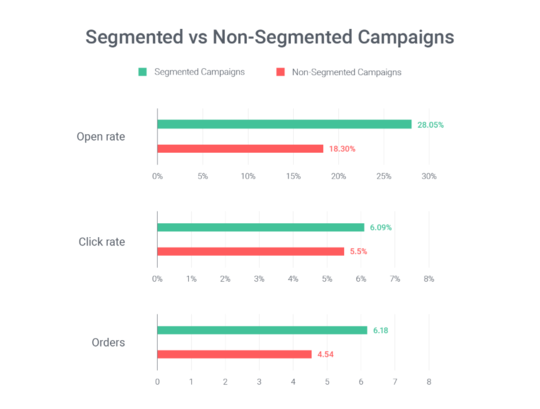This Email Ecommerce Study From Omnisend Will Help Improve Your 2019 Campaigns
Having gone through millions and millions of campaigns, we've accumulated a great amount of data to demonstrate to you some important ecommerce email trends: what's better - single channel or multichannel marketing? How do segmented campaigns perform compared to non-segmented campaigns? When is the best time to send the campaign?
Omnisend recently conducted a study that took at look at these questions and arrived at some interesting results.
Single Channel versus Omnichannel Marketing
First of all, let's look at the data comparing single channel marketing against omnichannel marketing.
Even though integrating several marketing channels in a marketing campaign has been more popular and useful in the recent years, some marketers are still using only one channel.
To be more precise, it has been widely considered that using more than one marketing channel has a direct positive impact on customer retention rate. This simply means that the more channels you use, the more loyal your customer becomes to your brand.
This statement has been proven true by recent analysis, which found that marketers who use three or more channels in campaigns earn almost a customer retention rate that's twice as high as those who use only 1 channel (see pie-charts below).

It has also been proven that those clients who have been targeted through 3 or more channels were not only more loyal, but also willing to spend more than those targeted through only 1 channel - $66.31 vs $58.70 AOV (average order value), which is 13% higher on average than customers interacting with a single channel campaign.

Also, it's important to mention that the difference in the results received is even more substantial when it comes to comparing purchase rate and engagement rate generated by the single-channel marketers and multi-channel marketers. Both rates have come to be 2.5 times higher for the latter group of marketers, not surprisingly.

Segmentation versus Non-Segmentation
Segmentation works. Period.
And if you think about it, there shouldn't be any doubts at all - segmentation simply means dividing your target audience into smaller groups of people and targeting them with content which is relevant specifically to them. The more personalized the content is, the more likely it is that the person will open the email and read through it, or even continue purchasing your products.
We can see from the graph below that the open rate of the segmented email marketing campaigns is over 30% higher than that of non-segmented, which makes it clear that personalizing your marketing campaign to each target group leads to them being more interested in the email's content.
Further, we can see in the same graph that the click rate is also slightly higher - 6.09% versus 5.5%. Most importantly (from a business perspective) is that segmented marketing campaigns resulted in 26.5% more orders generated than non-segmented campaigns.
All of this data tells us that when the audience is segmented into smaller groups and the right message is delivered to the right audience, the result is that customers are more willing to open the email, read it, follow the included 'call to action', and finally purchase your products.

Email Statistics: When Is the Best Time to Send That Campaign?
So, you're done setting-up your multi-channel marketing campaign and you've segmented your audience, and now the last thing you want your target audience to think when they receive your 'piece of communication' is "I am at work right now, will read it later".
This simply means - I will probably forget about your email and will never return to read it. In order to avoid such situations, let's look at the statistics demonstrating the best times to send marketing campaigns.
Speaking on a more high-level view - days of the month - the best combined average open rate and average click rate is generated at the beginning of the month - on the 5th, 7th, and 12th days. Thinking logically, this might have to do with the fact that the average person is more efficient in the beginning of the month, so he/she manages his inbox/social networks much better, than in the end of the month.

Taking a look at hours of the day I think it will be of no surprise to see that the greatest average open and click rates in the email campaigns are earned before work, at around 8am (20.32% and 7.79% respectively), after the lunch break, at around 1pm (22% and 7% respectively), and during the usual end of day coffee break, at around 4-5pm, when both the average open and click rates are at their peaks.
 So for the best results for your email marketing campaigns, send them around work breaks.
So for the best results for your email marketing campaigns, send them around work breaks.
These three considerations are the key to any marketing campaign, and if you follow the data, you will see improved results.
This guest article was written by Nikita Ufimcev, freelance copywriter for Omnisend and business developer at two emerging startups.


